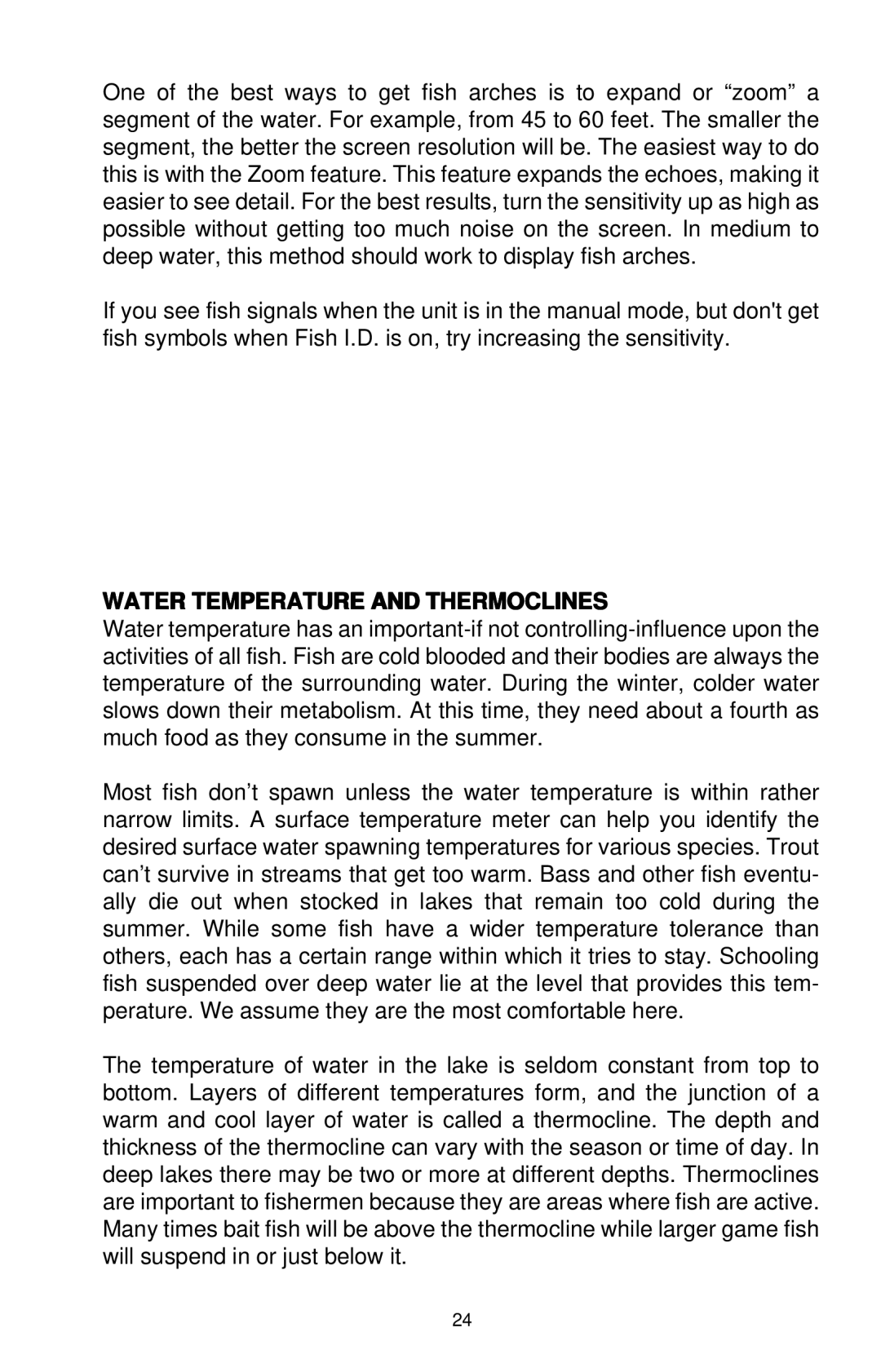One of the best ways to get fish arches is to expand or “zoom” a segment of the water. For example, from 45 to 60 feet. The smaller the segment, the better the screen resolution will be. The easiest way to do this is with the Zoom feature. This feature expands the echoes, making it easier to see detail. For the best results, turn the sensitivity up as high as possible without getting too much noise on the screen. In medium to deep water, this method should work to display fish arches.
If you see fish signals when the unit is in the manual mode, but don't get fish symbols when Fish I.D. is on, try increasing the sensitivity.
WATER TEMPERATURE AND THERMOCLINES
Water temperature has an
Most fish don’t spawn unless the water temperature is within rather narrow limits. A surface temperature meter can help you identify the desired surface water spawning temperatures for various species. Trout can’t survive in streams that get too warm. Bass and other fish eventu- ally die out when stocked in lakes that remain too cold during the summer. While some fish have a wider temperature tolerance than others, each has a certain range within which it tries to stay. Schooling fish suspended over deep water lie at the level that provides this tem- perature. We assume they are the most comfortable here.
The temperature of water in the lake is seldom constant from top to bottom. Layers of different temperatures form, and the junction of a warm and cool layer of water is called a thermocline. The depth and thickness of the thermocline can vary with the season or time of day. In deep lakes there may be two or more at different depths. Thermoclines are important to fishermen because they are areas where fish are active. Many times bait fish will be above the thermocline while larger game fish will suspend in or just below it.
24
